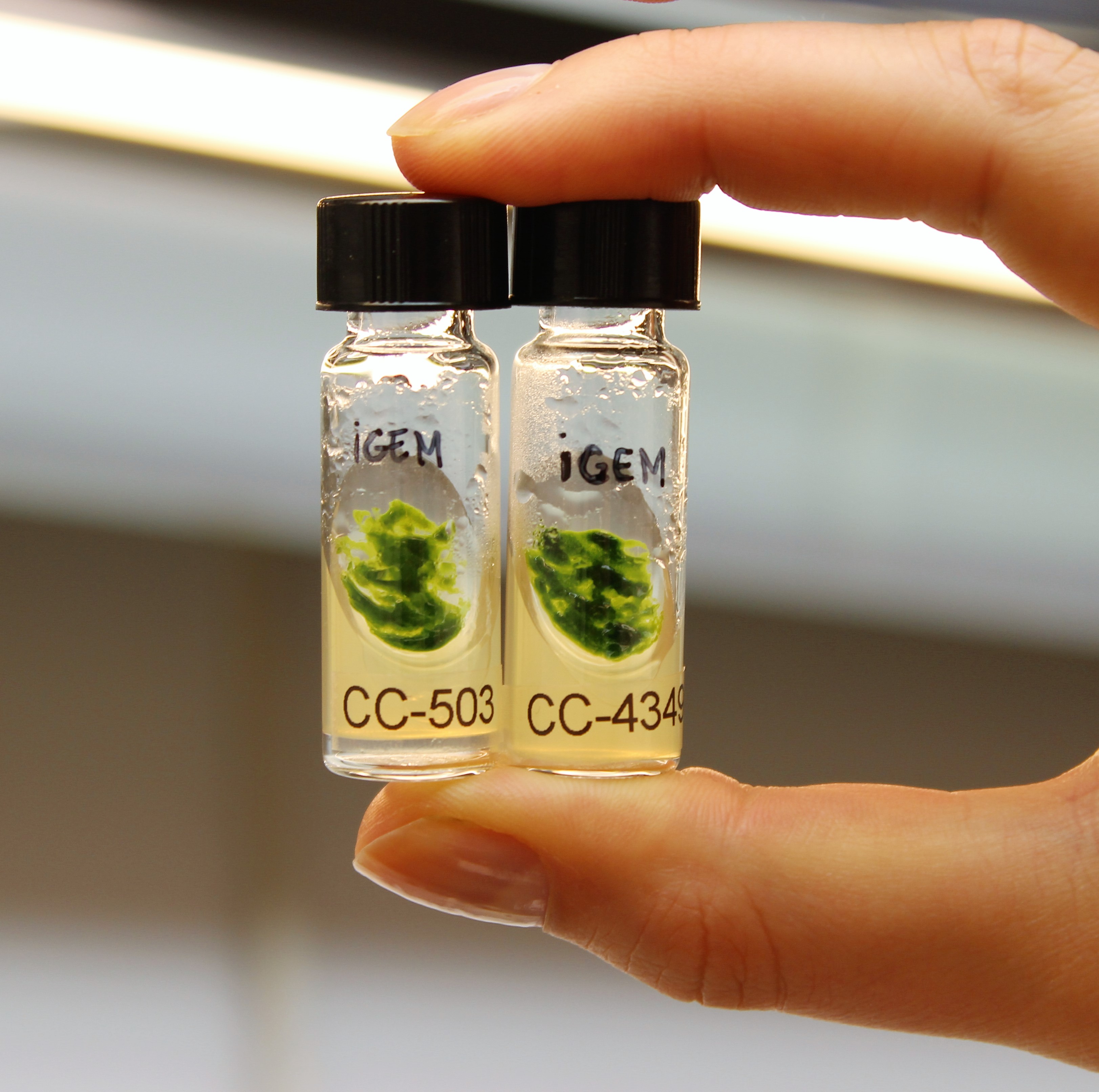What is our project about?
The 2016 iGEM team representing Linköping University, Sweden, will focus on allowing the usage of CRISPR/Cas9 in the unicellular model algae Chlamydomonas reinhardtii. This organism has shown great potential as a future source for production of biofuels. There are several advantages of growing algae for this purpose as they offer high productivity and production of biomass, which avoids competition with other productive land uses. These properties are not utilized on a large scale, partly due to the relatively low lipid content of today’s algae. Therefore, many attempts have been made to modify them for promotion of lipid synthesis, and to optimize them for production of biofuels. Our goal with this project is to create new BioBricks consisting of an inducible promoter, and to couple it with a CRISPR/Cas9 system in C. reinhardtii. The reason why an inducible promoter is used, is to avoid complications such as the toxicity of a constitutively active Cas9. Our solution to this problem is to cause cultures of algae to undergo genetic modification in response to high intensity light when a sufficient amount of algae have been accumulated. A variety of genes can be targeted with this approach in order to upregulate synthesis of lipids in algae.
Why did we choose this project?
As a result of global warming due to excessive use of fossil fuels the LiU iGEM 2016 team decided to contribute in the search of alternative green energy sources. As previously mentioned, C.reinhardtii have shown beneficial properties in conservation of energy but also for applications in synthetic biology by reason of its unicellularity and sequenced genome. The discovery of the problem with the inefficient lipid production in C.reinhardtii led to the idea of using a controllable CRISPR/Cas9 system for optimization of the metabolism.
What do we hope to accomplish with our project?
The aim of this year’s project is to verify that an inducible promotor can be used with CRISPR/Cas9 in the C.reinhardtii model algae. This will allow further modification of metabolic genes in the near future. A more distant future prospect is to make algae the most efficient source for biofuel production and to make a contribution for the well-being of our planet.









